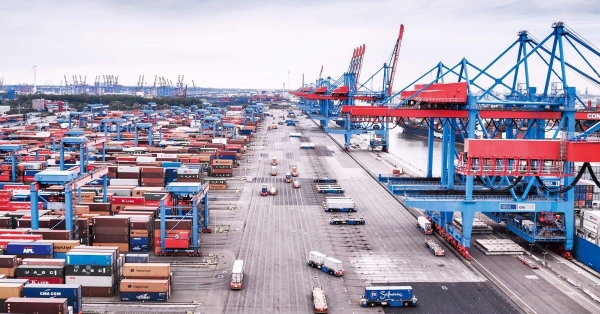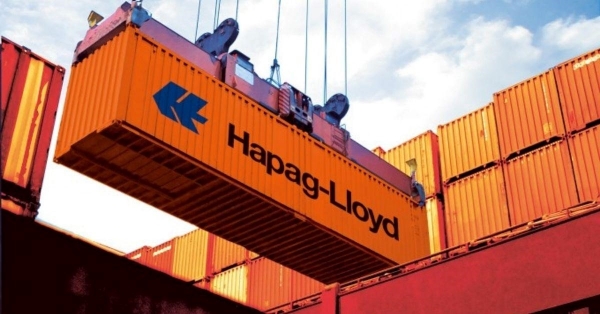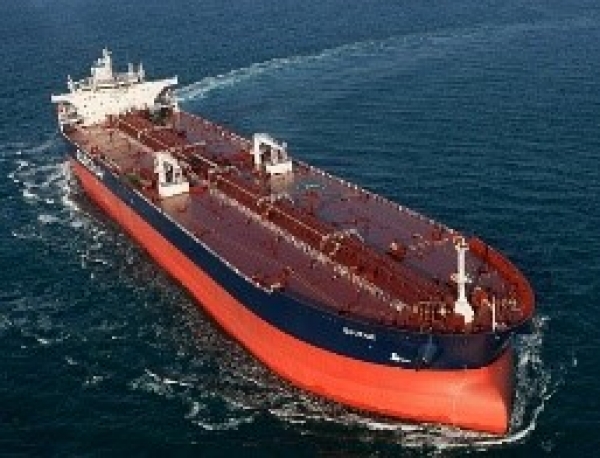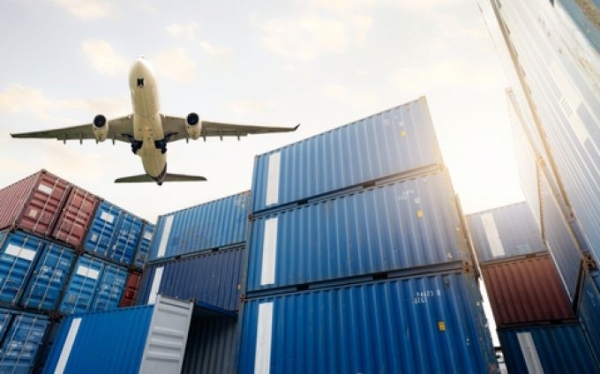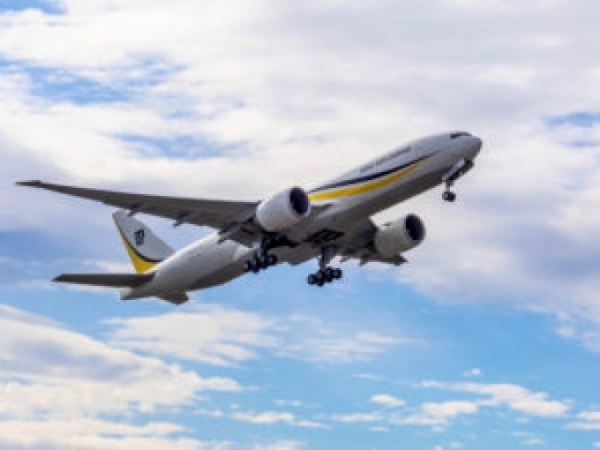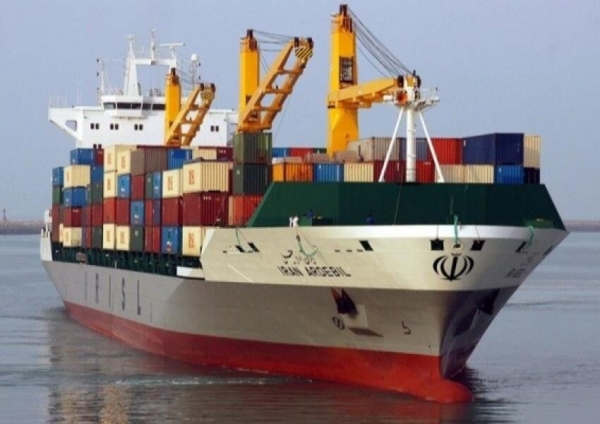News
Latest news
Bangladesh, Malaysia And Vietnam Grab Into China’s Share Of Consumer Goods Exports
Bangladesh, Malaysia, and Vietnam are already eating into China’s share of consumer goods exports, eroding China’s position further as nearby countries increase their shares of supply chains
According to the 2023 Container Shipping Outlook by Alix Partners published in March 2023, “Bangladesh, Malaysia, and Vietnam are already eating into China’s share of consumer goods exports and foresee China’s position eroding further as nearby countries increase their shares of supply chains and as government policies and business strategies outbound momentum. Mexico and Eastern Europe stand to gain over the medium term as more and more volumes shift out of China and to neighbouring countries.”
According to the Vietnam Customs data, Vietnam’s two-way trade in February was up almost US$3 billion over January despite February being a slightly shorter month. On the other hand, China’s exports to the EU totalled RMB 552.837 billion from January to February 2023, a year-on-year decline of 5.0%.
Southeast Asia has emerged as a strong economic “partnership region” as the world looks to a more diverse sourcing and manufacturing trade strategy.
“The diversification of trade will prove to be beneficial for ocean trade because this will cause a boom to the regional trade within Asia. It will also lead to more locations adding to the direct trade from the region to North America or to Europe. So, diversification will play a role and in general, this will soak up more capacity than what we would have had on transpacific China to the USA or China to Europe alone.” shared Christian Roeloffs.
Hapag-Lloyd Implements New Rate Increase From East Asia To North America
Hapag-Lloyd Implements New Rate Increase From East Asia To North America
Hapag-Lloyd announced a general rate increase (GRI) from East Asia to North America for cargo transported in dry, reefer and special containers, including high cube equipment.
Hapag-Lloyd announced a general rate increase (GRI) from East Asia to North America for cargo transported in dry, reefer and special containers, including high cube equipment.
More specifically, there will be a rate increase of US$800 per all 20′ container types and a US$1,000 increase per all 40′ container types.
The German ocean carrier said the general rate increase will be applicable to all containers gated in full from 1 May 2023 and will be valid until further notice. The GRI will be applied from Japan, Republic of Korea, Taiwan (PRC), Hong Kong (PRC), China (PRC), Macau (PRC), Vietnam, Laos, Cambodia, Thailand, Myanmar, Malaysia, Singapore, Brunei, Indonesia and the Philippines to the United States and Canada.
Chennai, Kamarajar Ports Eye 100 Million MT Cargo In FY 2023-24
The Chennai Port Trust and its subsidiary Kamarajar Port Ltd have set a target of crossing 100 million metric tonne of cargo in the current financial year.
The Chennai Port Trust and its subsidiary Kamarajar Port Ltd have set a target of crossing 100 million metric tonne of cargo in the current financial year, a top official said here on Monday. Both the ports handled 92.46 million metric tonne of cargo in the last financial year, Chairman and Managing Director Sunil Paliwal said.
On the performance of the Ports, he said Chennai Port Trust handled 48.95 million metric tonne of cargo, which was up by 0.8 per cent from 48.56 million metric tonne handled last year.
Kamarajar Port handled 43.51 million metric tonne of cargo in 2022-23 up by 12.31 per cent from 38.74 million metric tonne recorded the previous year.
“Container is the major cargo handled by Chennai Port Trust. It is about 58 per cent. While liquid bulk and dry bulk cargo also witnessed a good growth this year,” he told reporters.
To a query, the Chairman said exports of automobiles grew last year at Chennai Port Trust following the signing of agreements with several automajors including Toyota.
The exports by these companies from Chennai Port had offset the loss incurred due to the exit of US car maker Ford from Chennai last year, he said.
“Export of cars at Chennai Port Trust rose by 36 per cent to 2,31,412 units in FY2022-23 while it was 1,70,482 units in FY 2021-22.”
Kamarajar Port exported 1,48,307 units in 2022-23 as compared to 1,35,702 in 2021-22.
“Together both the Ports handled about 3,79,719 units of cars last year,” he added.
In a boost to cruise tourism, Paliwal said Switzerland based MSC Cruises, part of the MSC Group, was in discussion with the Chennai Port Trust for offering cruise tourism from the coastal town.
“They are planning to have Mumbai as a hub for cruise tourism in the western coast and Chennai as a hub in the eastern coast. From 2024 onwards, they (MSC Cruises) may commence operations from Chennai Port,” he said.
Chennai Port Trust in 2022-23 handled 37 Cruise ship calls carrying 85,000 passengers.
Regarding the financial performance, the official said Chennai Port reported its highest net surplus (profit before tax) in the last 13 years at Rs 150.26 crore in FY2022-23.
“This is a 33 per cent year-on-year increase in net surplus over last financial year 2021-22,” he said.
The highest net surplus achieved at Chennai Port would enable them to invest in developing the existing infrastructure projects.
As regards the financial performance of Kamarajar Port, Paliwal said the port surpassed Rs 1,000 crore mark as income to reach Rs 1,002.45 crore.
“This is an increase of 17.82 per cent from Rs 850.84 crore registered in 2021-22.”
Kamarajar Port registered a net surplus of Rs 669.93 crore in FY2022-23 which was an increase of 24.39 per cent from the earlier Rs 538.59 crore registered last year, he said.
Responding to a question on ongoing projects by Kamarajar Port, he said the cargo handling capacity at the port is being expanded with construction of RoRo cum GCB-II (3 metric tonne per annum) at an investment of Rs 161.09 crore.
Kamarajar Port is undertaking a capital dredging Phase-VI project to provide 18 metre draft to handle bigger container vessels at an estimated cost of Rs 549 crore, he added.
MSC Receives Largest Container Ship In The World
Shanghai-based Hudong-Zhonghua Shipbuilding (Group) built and delivered the largest container vessel in the world to Mediterranean Shipping Company (MSC).
MSC Tessa has a container capacity of 24,116 TEUs and is the first of four same-size container ships purchased by the largest container line in the world.
According to Hudong-Zhonghua, a unit of China State Shipbuilding Corp (CSSC), the vessel is currently the world’s largest boxship in terms of TEU capacity.
The mega container vessel measures 399.99 metres in length and 61.5 metres in width.
Hudong-Zhonghua Shipbuilding Group reported that the second vessel on order from the series has completed sea trials and that the other two sister vessels are also under construction. All the remaining boxships are expected to be delivered before August 2023.
other goods loaded upon the same vessels have also been tested, properly certified and handled correctly, to minimise potential risks to our own cargo. We believe this is a milestone for the industry and will quickly gain wider adoption,” said Yoyo Ju, Lead of Order Fulfillment Center - Doc Management at Midea.
More Vessel Operators Join Lucrative India-Russia Trade Lane
The company has estimated average transit times from Novorossiysk at two days for Istanbul, 14 days for Jeddah, 22 days for Mundra and 24 days for Nhava Sheva.
Ruscon, a leading multimodal transport logistics provider in Russia, has significantly expanded its containerised service network from the Black Sea port of Novorossiysk to Nhava Sheva (JNPT) and Mundra in West India as volumes rapidly rise.
The company, a Delo Group subsidiary, has now increased its tonnage deployments from one vessel to four vessels to provide a weekly sailing frequency on the route.
Additionally, an extra stop has been introduced at Saudi Arabia’s Jeddah Port. The service rotation already included a call at Istanbul Port in Turkey.
The company has estimated average transit times from Novorossiysk at two days for Istanbul, 14 days for Jeddah, 22 days for Mundra and 24 days for Nhava Sheva.
“A regular multimodal service between India and Russia has been operational since July 2022, providing containerized cargo shipments from anywhere in Russia through Delo Group’s terminals in Novorossiysk to the Indian ports of Mundra and Nava Sheva,” Moscow-based Delo Group noted.
According to Ruscon’s head Sergey Berezkin, “With the increase in the number of vessels, we are offering customers the best delivery cycle in the market for optimal planning of the shipment schedule.”
Berezkin went on to explain, “The additional call at Jeddah Port will open up new opportunities for shippers interested in shipping to/from Saudi Arabia, which is one of the key states in the region.”
That move comes on the heels of FESCO (Far Eastern Shipping Co.), Russia’s largest ocean container carrier, adding a direct shipping connection on the same route. The inaugural call at Nhava Sheva was made last week, according to local sources.
With cargo volumes between India and Russia building up, niche Indian NVOs, non-vessel owners, have also begun deploying vessels on inducement.
Mumbai-based Econship is one such new entrant into this lucrative market.
The traditional NVO connects Nhava Sheva and Mundra to Novorossiysk, with extended inland reach for St. Petersburg and Moscow. It has phased in a 900-TEUs vessel, with plans to offer a regular monthly sailing frequency once settled into the market.
Econship currently offers a transit time of 16 to 18 days from Nhava Sheva to Novorossiyk.
Company sources said it has made three calls out of West India for Russian ports over the past two months.
Iran Shipping Line (IRISL) has also been more actively moving cargo between Russia and India via the International North South Transport Corridor (INSTC), under a multi-modal logistics model, after western sanctions on Moscow had forced regular mainline operators to suspend operations/bookings out of Russia.
Dry Exhaust Cleaning System Installed on Bulker
Dry exhaust gas cleaning system installed on bulker Bontrup Amsterdam (SodaFlexx)
With traditional scrubber systems coming under increasing pressure for the wash residue which environmentalists highlight as a pollutant, a dry exhaust system sodium compound provides an alternative that can permit older, in-service ships to meet increasing emissions regulations. A dry system was recently installed on a Dutch-owned bulker with its manufacturer also highlighting the potential for a containerized system that further eases operations.
The Integrated Dry Exhaust Gas Cleaning System developed by UK-based SodaFlexx was recently installed on the Bontrup Amsterdam, a 39-year old dry bulker owned by the Dutch company Bontrup. Built in 1984, the vessel is 65,400 dwt and 736 feet long powered by a traditional heavy fuel propulsion plant. The installation of the dry exhaust system took place during the last week of February in Amsterdam. According to the companies the installation required less than three days with the vessel resuming service last week sailing from The Netherlands to the UK.
“The technical installation of the SodaFlexx System has been successfully completed and the commissioning is going to take place in March 2023. The project is running smoothly, although we had to make some adjustments right before the installation,” said Elwin Koning, Managing Director, Engineering at SodaFlexx. “The system offers a lot of flexibility and we have a wide range of options we can incorporate to achieve an optimized installation. This new SodaFlexx system uses our advanced Hyperion technology which uses AI to ensure optimal absorbent dosage for the required emissions zone.”
The SodaFlexx dry powder unit injects sodium bicarbonate powder directly into the exhaust gas stream to neutralize sulfur compounds (SOx). In the heat and turbulence of the exhaust gas stream, a chemical reaction occurs converting SOx to a highly stable and non-toxic salt. This salt is released safely into the atmosphere or can be captured by a cyclone particulate capture system and recycled ashore.
SodaFlexx highlights that the system allows vessels to burn HSFO (High Sulfur Fuel Oil). It can be connected to the main engine and also to auxiliary generators, boilers, and incinerators. The company offers an option for a prefabricated containerized and stackable units on a TEU footprint.
In addition to permitting the use of the lower-cost HFSO option versus Marine Gas Oil (MGO), the company also highlights that most older marine engines were designed to burn HFO. The dry exhaust system offers an option that is environmentally sensitive while permitting the ship’s owners to follow existing maintenance and lubrication protocols for their in-service ships.
“Finding the balance between economical and environmentally friendly solutions for the maritime industry is the ultimate goal of our business,” says Barry Bednar, CEO of SodaFlexx. “The transition to alternative fuels won’t happen overnight and we still have a global fleet to operate in the most sustainable way possible, and burning HSFO with our exhaust gas cleaning system has proven to be less CO2 intensive than using MGO or VLSFO on a “well to wake” basis.
The basis for the system, sodium bicarbonate, is produced by many manufacturers and on all continents. The company offers a containerized solution for the material aboard the ships or it can be delivered by truck or barge. The residue is also easy to recycle versus wash water from wet scrubbers which is increasingly being regulated.
India is the Third Biggest Importer of Crude Oil
India is now the third biggest importer of crude oil, with a market share of 11% of global crude oil imports. In its latest weekly report, shipbroker Banchero Costa said that “2022 has turned out to be a very positive year for crude oil trade, despite the surging oil prices and risks of economic recession. In the full 12 months of 2022, global crude oil loadings went up +8.7% yo-y to 2,049.8 mln tonnes, excluding all cabotage trade, according to vessels tracking data from Refinitiv. This was well above the 1,886.3 mln tonnes in Jan-Dec 2021, but slightly below the 2,110.5 mln tonnes in the same period of 2019.
According to the shipbroker, “exports from the Arabian Gulf were up +12.8% y-o-y to 879.5 mln t in 2022, and accounted for 42.9% of global seaborne crude oil trade. Exports from Russia have also increased by +10.3% y-o-y to 218.4 mln tonnes, or 10.7% of global trade. From the USA, exports surged by +22.8% y-o-y to 165.0 mln t. From West Africa, however, exports declined -2.3% y-o-y to 170.7 mln t. From the North Sea, exports were also down by -1.9% y-o-y to 107.4 mln tonnes in Jan-Dec 2022. In terms of demand, seaborne imports into the European Union (27) increased by +12.2% y-o-y to 451.7 mln t in Jan-Dec 2022, with the EU accounting for 22.3% of global seaborne crude oil imports. Imports to India also surged +11.5% y-o-y to 223.8 mln t in 2022. Imports to China, however, declined by -2.6% y-o-y to 438.7 mln t, the lowest level since 2018”.

According to the shipbroker, “exports from the Arabian Gulf were up +12.8% y-o-y to 879.5 mln t in 2022, and accounted for 42.9% of global seaborne crude oil trade. Exports from Russia have also increased by +10.3% y-o-y to 218.4 mln tonnes, or 10.7% of global trade. From the USA, exports surged by +22.8% y-o-y to 165.0 mln t. From West Africa, however, exports declined -2.3% y-o-y to 170.7 mln t. From the North Sea, exports were also down by -1.9% y-o-y to 107.4 mln tonnes in Jan-Dec 2022. In terms of demand, seaborne imports into the European Union (27) increased by +12.2% y-o-y to 451.7 mln t in Jan-Dec 2022, with the EU accounting for 22.3% of global seaborne crude oil imports. Imports to India also surged +11.5% y-o-y to 223.8 mln t in 2022. Imports to China, however, declined by -2.6% y-o-y to 438.7 mln t, the lowest level since 2018”.
Banchero Costa said that “in 2022, India was the third largest seaborne importer of crude oil in the world, after the European Union and Mainland China. Last year, India accounted for 11.0% of global crude oil imports, in what remains a very fragmented market. The world’s top importer, the EU, accounts for 22.3% of global volumes, and China for 21.6% Imports into India have grown rapidly over the years, driven both by domestic demand but also due to the establishment of a large exportoriented refining industry. India’s seaborne crude oil imports in the 12 months of 2022 increased by +11.5% y-o-y to 223.8 mln tonnes, from 200.7 mln tonnes in 2021. Volumes were particularly high in 2Q 2022 with 59.5 mln tonnes, up +18.1% y-o-y and the strongest quarter on record. The major crude oil import terminals in India are: Jamnagar (64 mln tonnes discharged in 2022), Vadinar (43 mln tonnes in 2022), Paradip (29 mln tonnes), Mundra (18 mln tonnes), Mumbai (16 mln tonnes), Cochin (15 mln tonnes), Chennai (9 mln tonnes), Visakhapatnam (8 mln tonnes). About 51 percent of crude oil volumes discharged in India in 2022 were carried in VLCCs, about 35 percent of Suezmaxes, and 13 percent on Aframaxes. The vast majority of imports are sourced from the Arabian Gulf, accounting for 59% of India’s total imports in 2022. Volumes from the Arabian Gulf to India increased by +7.4% y-o-y in 2022 to 133.0 mln tonnes”.

Source: Banchero Costa
The shipbroker added that “the single largest supplier to India is Iraq, with 51.6 mln tonnes in the 12 months of 2022, or 23 percent of India’s total imports. In second place was Saudi Arabia, with 40.1 mln tonnes in 2022, or 18 percent of the total. The UAE accounted for 21.8 mln tonnes, or 10 percent, with Kuwait in fourth spot with 11.9 mln tonnes and 5 percent in 2022. Aside from the Gulf, the largest exporter to India is now Russia. In 2022, India imported 33.4 mln t of crude oil from Russia, up +705.1% yo-y from just 4.1 mln t in 2021. Russia now accounts for 15% of India’s crude oil imports. On the other hand, volumes from West Africa to India declined by -23.4% y-o-y in 2022 to 18.2 mln t. Shipments from the United States to India also declined by -16.1% y-o-y in 2022 to 15.7 mln t. From South America there has also been a -29.7% y-o-y decline to 6.3 mln t in 2022. From Mexico, volumes were down by -31.9% y-o-y to 4.7 mln t in 2022”, Banchero Costa concluded.
New Mombasa sea-air terminal will slash transit times into Africa
A new sea-air terminal in Mombasa is aiming to more than halve the transit time for goods moving between China and West Africa.
Under development by Astral Aviation, the terminal will be the first in Africa to offer sea-air connectivity, as cargo demand within the continent, which includes 16 landlocked countries, is expected to substantially increase over the next decade.
Astral CEO Sanjeev Gadhia told delegates at last week’s World Cargo Summit in Abu Dhabi: “On a purely ocean freight basis, it takes 66 days for deliveries from China to reach Nigeria’s largest city, Lagos, but with this sea-air route, the first for the continent, we will be able to deliver goods in under 30 days.”
While the latest IATA figures show a contraction in airfreight demand, compared with pandemic and pre-pandemic years, volumes from China are expected to climb, long-term.
Mr Gadhia said that, while the development of Mombasa would be the first, Astral was already in the process of identifying additional sea-air terminals, citing Durban in South Africa and Lome in Togo as potential future sites to cater for this demand.
“Having received the concession for Mombasa, the terminal will provide a faster alternative to the sea-air model operating via Jebel Ali,” Mr Gadhia continued. “But we do not deny that there remain hurdles we will have to overcome if it is to be a true success, not least of which are regulatory problems.”
A particular concern for Astral is the lack of understanding between shipping bills of lading and airfreight’s air waybills, when it comes to customs authorities.
Robert Sutton, SVP of the free zone at Abu Dhabi Airports, which is contending with its own regulatory issues in making its sea-air offering viable, said the “path to success” depended upon a standardisation of documents and process across the modes, not just air and sea.
“As we digitise the industry, we should be able to develop a more seamless facilitation of trade, regardless of mode,” Mr Sutton said.
“There are certainly regulatory changes required to make Abu Dhabi effective on the sea-air front, but our role is to work on the creation of bonded corridors that will allow the cargo to seamlessly flow between airports, ports, and even rail terminals.”
Mr Sutton said Abu Dhabi was committed to the sea-air product, which would be seen in the support it provided on the legislative front.
Support for the product does appear to be increasing, although there have been questions raised over the issue of liability when splitting transport across different modes, but chief operating officer at Ceva Logistics Peter Penseel said: “When it comes to liability, this would not be connected to the air waybill nor to the bill of lading, the forwarder would be liable.”
Incheon and sea-air services the target for shipping line airlines
Two of the three new shipping line airlines are flying to Incheon, home to South Korea’s largest airport and second largest port, in a move which could lead to sea-air operations.
MSC began twice weekly services on its Atlas Air-operated 777F on 1 January on a route that, in the past week, has also included Amsterdam, Indianapolis, Liege, Mexico City, Xiamen, and Cincinnati.
The airline, which has effectively outsourced its operations to Atlas Air, has three more 777Fs arriving, although the dates have not yet been confirmed.
Incheon Airport said the route was starting with “irregular flights twice a week, and will be expanded to regular flights within 2023”.
Maersk too is flying between Incheon and Greenville Spartanburg on a 767 operated by Amerijet, the first of three to start flying for the shipping line.
And Incheon Airport is hoping to see multimodal solutions. President & CEO Kyung Wook Kim said it “plans to strategically collaborate with cargo airlines launched by global shipping companies to lay the groundwork for creating new cargo volume, such as vitalising multimodal cargo transport by sea and air”.
He added: “We will continue to strengthen Incheon’s competitiveness in air logistics by developing new cargo terminals and attracting investment, while maintaining its second place ranking in international cargo traffic volume through expansion of logistics infrastructure and networks.”
Meanwhile Maersk Air Cargo, which is now based at Billund Airport, received permission on 20 December to transfer its US flight rights from Star Air. It will also fully integrate German forwarder Senator’s operations next month, when the Senator name will disappear.
MD of Senator, and now head of north Europe for Maersk, Jens-Ole Krenzien told DVZ Senator had some 7,000 to 8,000 tons of freight a month and 19 weekly departures from Frankfurt and Amsterdam which had been operated by Magma Aviation. Senator’s major customers, including BMW, had stayed with Maersk – as had the top executives at Senator, so customers should see little change, he added.
CMA CGM has not signed up to Incheon – yet. After some confusion last year over its US routes, it is now operating between Paris and Chicago O Hare with an A330-200F. Two of its aircraft are flying under Qatar Airways flight codes, one between Brussels and Doha, and one taking in several other European destinations including Luxembourg, Zaragoza and Budapest.
One of its A330s, operated by Air Belgium, has been in Chateauroux since 4 January. Interestingly, although Air France said it would not begin marketing CMA’s flight operations until April, one A330F is flying under an Air France flight code, from Paris to Chicago and other European cities.
The shipping lines, which made billions during the Covid period, are now facing large-scale declines in demand and rates, while costs are rising fast. They are also facing significant rises in capacity after filling up orderbooks, while also trying to integrate the businesses they bought, as well as now running airlines.
CMA CGM’s Ceva Logistics said yesterday it had now taken over the Gefco brand, which CMA bought in July and which will now disappear from the market. Ceva has created a finished vehicle logistics organisation from Gefco’s operations and integrated its other sectors, such as contract logistics and ground transport into Ceva operations.
Iran, Kazakhstan consider establishing direct shipping line in Caspian Sea
In a meeting between Head of Iran’s Ports and Maritime Organization (PMO) Ali-Akbar Safaei and Kazakh Ambassador to Tehran Askhat Orazbay on Monday, the two sides discussed ways of expanding maritime ties, including the establishment of a direct shipping line in Caspian Sea.
Speaking in this meeting, Safaei stressed the need for the development of logistics and maritime cooperation between the two countries and voiced PMO’s readiness for awarding maritime and port projects both in the north and south of the country to Kazakh contracting companies, the PMO portal reported.
Orazbay, for his part, pointed to a visit of Kazakhstan’s expert delegations to Iran to assess the facilities and equipment of Amirabad and Shahid Rajaei ports over the past year and said that the investment of Kazakh companies in Iran’s ports is under consideration.
Iran and Kazakhstan inked a memorandum of understanding (MOU) on the expansion of cooperation in the agriculture and trade fields as well as industries, logistics, transportation and technology transfer in Tehran last November.
The MOU was signed by Javad Sadati-Nejad, the Iranian agriculture minister, and Zhumangarin Serik, the deputy prime minister and minister of trade and integration of Kazakhstan, who visited Tehran on top of a Kazakh delegation.
As reported, the effort of the two countries in order to increase the value of bilateral trade to about one billion dollars, based on the agreements of the presidents of the two countries, is considered in the MOU.




















